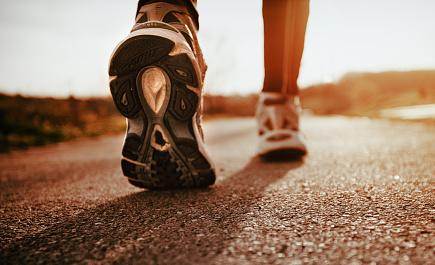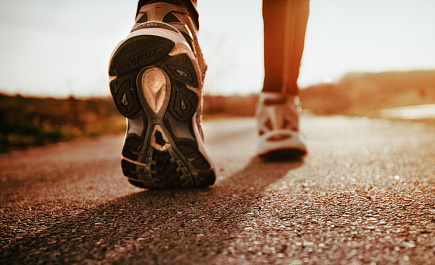
11,000 Steps in the Right Direction: How Exercise Helps Me Be More Productive
By Jen Scott, Applications Engineer

I am a championship sitter. I can sit all day long. While I’m working, I can become so focused, I don’t even notice the hours passing. Some research says this can kill me, but new research is showing that it’s overall activity that’s more important when gaging your health. Good news for us desk jockeys!
I tried some of the tips others have given to increase your activity level at work. I set an alarm once an hour to remind me to move. All that seemed to do was break my concentration for the second it took me to turn it off. I never wanted to stop working to start walking. It was the same with trying to incorporate a morning or afternoon walk. Lunch break walks were the easiest to incorporate, but were inconsistent with poor weather and social lunches.
To combat my sedentary day, about four years ago, I started wearing an activity tracker and set a daily goal of 11,000 steps. Why not 10,000? Because I’m an overachiever.
I started seeing and feeling the benefits almost immediately. I felt better, I slept better, I managed my time better, and I looked better. I especially loved being able to check the box next to “highly active” in all the wellness surveys. I was proud of my daily accomplishment and I truly felt my life was improved by my daily walking.
Then, a series of circumstances caused me to fall out of this daily habit and for nearly six months I didn’t get my 11,000 steps a day. I barely got 2,000 steps. And, guess what? All of those benefits flipped. I felt tired and more easily became stressed. I started sleeping less and the quality of my sleep was poor (my activity tracker also tracks sleep patterns). My clothes started to feel snug and my overall well-being seemed to decline. I was disappointed in myself every day for not achieving my goal.
How did all of this affect my work? While I don’t believe the quality of my work suffered greatly, the way I felt about my work and myself suffered. During my non-active period, I noticed my stress levels increase more quickly and I would feel frustrated more easily. My self-esteem diminished and so did my confidence in achieving other goals. Worst of all, my crankiness spread to others and I was more easily irritated with colleagues, too. It became obvious that I needed to take those 11,000 steps.
Walking just 2,000 steps during my work day, means I needed to walk for approximately 1.5 more hours to reach 11,000 steps. It’s not always convenient to carve out that kind of time in one chunk every day, so I have created some of my own tips to get more steps during the work day.
- Walk in place during conference calls
I average 100 steps a minute, so even if I’m walking during just half of an hour meeting, I can get in thousands of steps. Even in an open office, tethered to my machine with ear buds, I can comfortably walk at my workstation. Don’t worry about looking odd; your co-workers will get over it. - Take a “thinking walk”
While I may have a hard time pulling myself away from work while things are going smoothly, I have had some success using walks to think about issues I’m having. You know how they say, “Once you stop looking for an answer, you’ll find it”? I find this is especially true if I’m moving. Whatever issue I have, ideas on how to solve it seem to come to me on the treadmill. - Drink tea
I’m fortunate to work in an office with a hot water dispenser in our kitchen; I recently started drinking more tea and found I was getting up to 1,000 more steps during my work day. Drinking tea worked like the hourly activity alarm, but in a much more compelling way; it got me up regularly to replenish my cup. There are also the added health benefits of drinking tea! - Park further away
I can’t take credit for this classic, but it works! Every little bit helps, even if it’s just a dozen more parking stalls between you and the door. - Give yourself an excuse to move
Getting out for a stroll at lunch seems to be a lot easier if I have a purpose, so I’ll give myself an errand to run, such as buying ingredients for that day’s dinner at a nearby store, to force myself out on my lunch break.
Incorporating ways to be active that work for YOU is what is most important. You can be a championship sitter like me, as long as you take steps (ha!) to counter it when you can. At the end of the work day, I make sure to carve out the time I’ll need to get the rest of my steps. Accomplishing my daily goal helps me feel better and, as a result, helps me be a better worker.
As an added bonus, a flurry of news reports point to regular exercise as a way to improve your thinking skills and memory. And, other reports show that I’m not the only one who saw time management and work happiness benefits from daily exercise. So, set your own goal, get moving, and start reaping the rewards of being more active!
